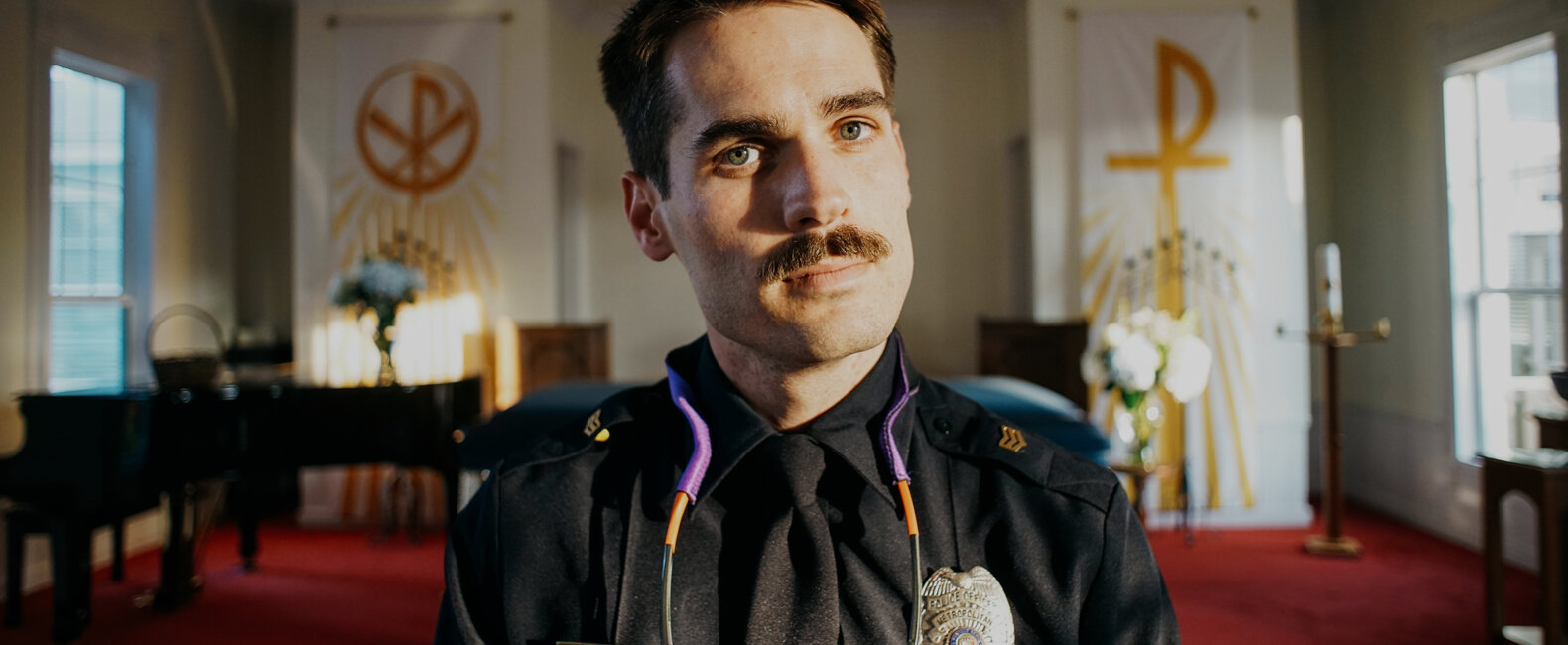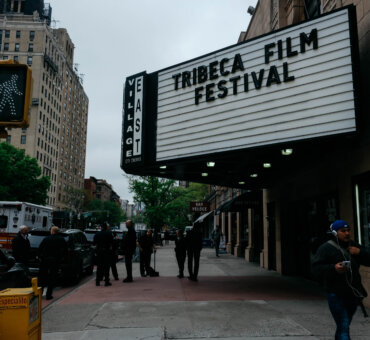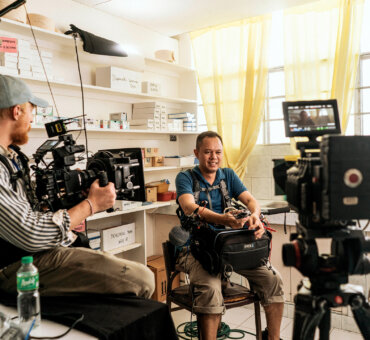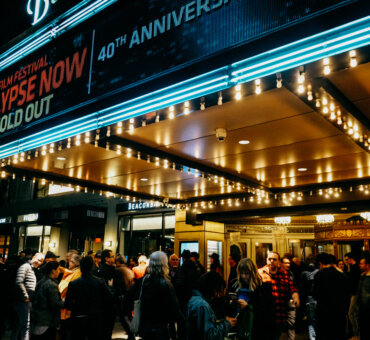There’s maybe no one more qualified to be leading the charge for independent filmmakers these days than Jim Cummings. Since we talked to him a year ago, he’s gone on to make his first feature, Thunder Road, and win the Grand Jury Prize at South By Southwest. The film is currently sitting at 97% on Rotten Tomatoes. It’s already generated $500,000 in ticket sales in France alone. Maybe most notably, though, he and his crew made it on their own — no major studio, no executives, no distributors. It’s an independent film in the truest sense of the word. Let’s just say, he’s fired up about that:
“It’s all bullshit — all of this stuff that says in order to make a movie you need a million dollars, this union crew, all of that stuff. It’s all scare tactics to keep people out of the club,” he told us. “You just have to realize there is no club.”
Thunder Road’s success as an independent film, though, isn’t dumb luck. It may have launched like a rocket during its premiere, but even rockets need guidance. It turns out Jim is not only a talented director and actor; he’s also a good marketer. He had a few things to say about how independent filmmakers are fully equipped to make their feature film right now, from getting a crew together and generating funding to self-distribution.
We caught up with Jim to talk about what he’s been up to over the past year, which happens to be disrupting the film industry a bit. So, if you’re a filmmaker who’s ever dreamed of releasing a feature film, listen up. Jim just did and here’s what he has to tell you:
Getting a Crew
Musicbed: Where did you start after you had a script?
I spent six or seven months going to all of the people I thought would be helpful; people who had turned successful short films into successful features. I found that transition doesn’t exist as much anymore, with this convergence of everyone becoming their own movie studio. The democratization of digital distribution and just a number of things have contributed to the ladder not being sent back down from people are making short films.
It took me a while to get my bearings and a good friend of mine, Zach Parker, read the script and was a huge fan of the short film. He said, “I want to do the Linklater thing and go make five features in Austin.” And after reading the script, he said, “I want this to be the first one. Option it to me.” He’d never produced a feature before, but he was so determined.
Was there some uncertainty there?
To be entirely honest, I was uncertain until we sat down for the second time. I’d been burnt before by people saying they’ll pay me to write a screenplay or whatever. I didn’t know what his intentions were. He and I went to a cafe because he was asking me to sign the contract for the option — it was for a dollar [laughs].
Then he started talking about Bruce Springsteen and what Thunder Road means — in terms of the script, not just the song. He said, “Thunder Road means how much you will do for your children; that’s what it’s about.” Just the way he said it, it was one of those moments you realize you totally get along with someone because you’re both accidentally crying in public, having to look away and pretend like you’re not noticing the other person crying. I left that meeting immediately thinking, This is the guy. He’s very adamant about it, just like me.
Now, any time I’m bringing on a cast or crew member, it’s not about their credentials. It’s their talent and enthusiasm. Those are the only two hiring requirements. It doesn’t matter how long your IMDB page is. If this movie really means something to them, they’re hired. Everybody on set was like that. Everyone had lost somebody or wanted to make something about this character going through hell.
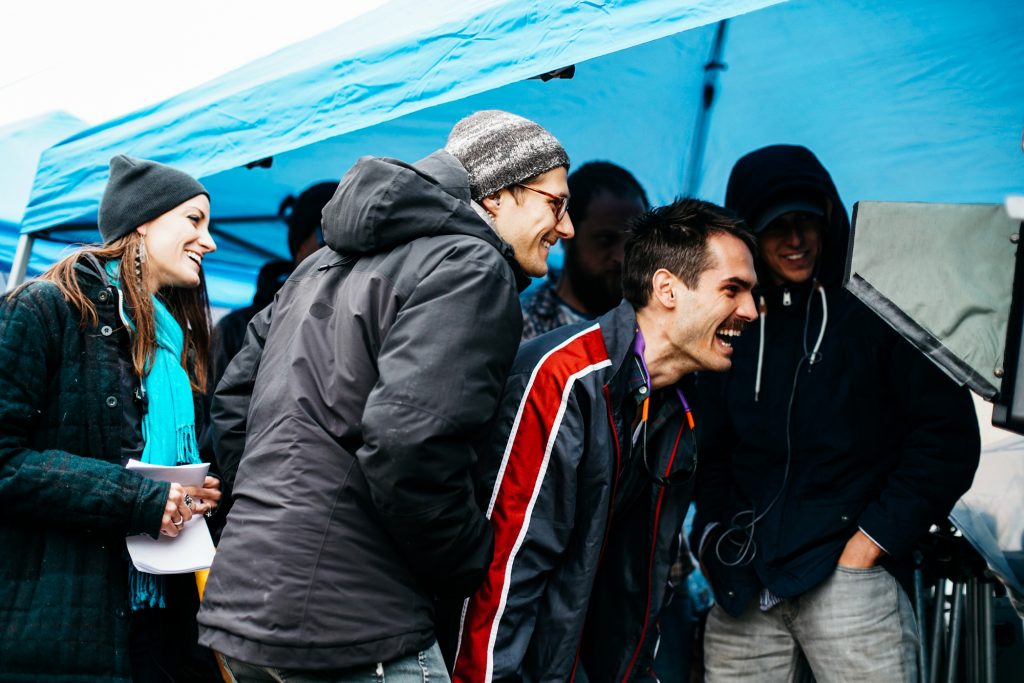
Did that involve a significant amount of vision casting on your side?
Well, a big part of the film was us re-shooting the short film — and we shot it 18 times in one day. So, that humiliating dance and big performance, all that, people were seeing how much I was torturing myself.
I started the first meeting at six in the morning and I hadn’t met a lot of the people on the crew. I stood up on a dolly and said, “Hey, I’m Jim. I’m the guy. I do the thing. This might be the most important thing I’ll ever do with my life. This movie’s about putting this character through hell. So, if there’s anything that comes up on set where you can make it more complicated for me to perform or more endearing for me to perform, let’s do it. Put me through hell for the next 14 days.”
From then on, everybody felt like they were part of something important. It really felt like that from everybody.
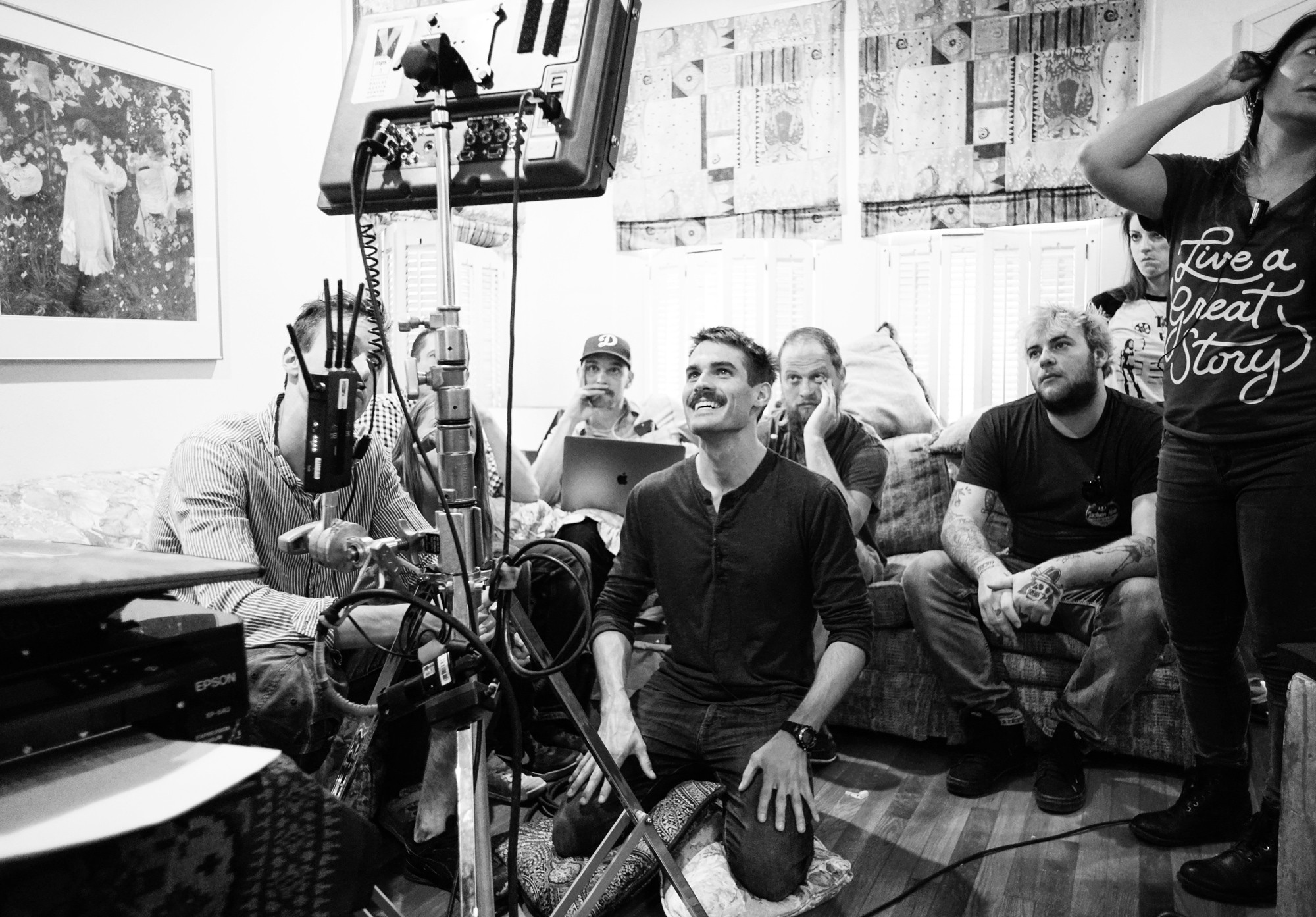
Finding Funding
Were there some aspects of using Kickstarter that surprised you?
Yes. There were many unexpected things. We were able to raise $36,000 from Kickstarter. It was crazy.
I’ve run probably four or five Kickstarter campaigns for other directors as a means of building an audience and engaging a community, but for this one, we had rewards for people who wanted to be associate producers and executive producers for higher donations. For associate producers, I think we said it was a $3,000 donation. That was a lot of money for me. I didn’t think that many people would become producers, but we had five or six come on and they were great.
And it wasn’t just about associate producing. It became a film school for them because many of them hadn’t been on a feature set. Now they’re seeing they could do it themselves. A lot of these associate producers have said, “I’m going to do it myself. Jim did it; now I can do it.” It wasn’t just a means of financing the thing, it became this way for us to engage people and give them life affirmation or purpose. It was a phenomenal environment that we created because we gave them unprecedented access to a film.
How did you generate the rest of your $190,000 budget?
About half of it was, very luckily, people who had seen the Kickstarter and said, “Hey, I saw this. This is a successful thing that’s happening.” I don’t think that would have happened if we hadn’t won Sundance with the short film. We had made nine other short films and put them on the Kickstarter page, too. So they were able to engage with 30 or 40 minutes of stuff we had made.
But, I don’t know if I would do it again because crowd equity platforms are so incredibly useful. With a Kickstarter campaign, there’s no promise of returns; it’s just a donation and you may get some cool rewards. But with crowd equity, you’re buying points on the backend. So, with the next few projects, we are going to go through platforms like Wefunder, where you’re able to sell percentages to people for very small amounts. That’s the dream for me, just using the internet like it’s a Patreon page.
I think Kickstarter is incredible and I suggest that everybody use it to start out. We just ran a lab for filmmakers who are trying to turn their short films into features and basically my main advice was to run a Kickstarter the same day as your launch on Vimeo. The first line of your description should be a link to your Kickstarter campaign.
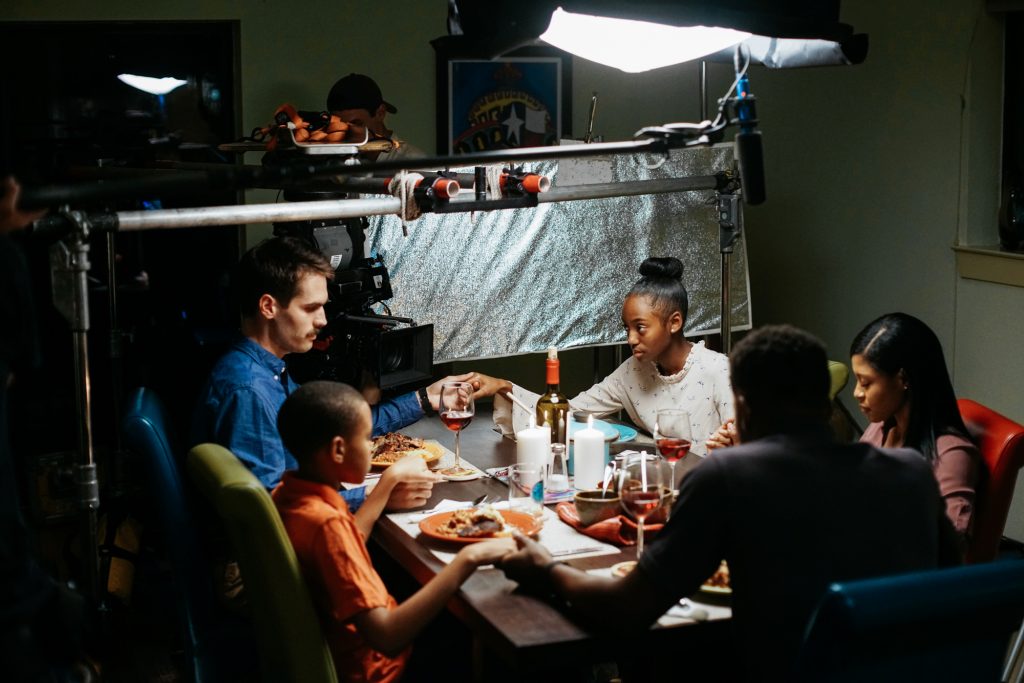
Self-Distribution
Why did you decide to self-distribute Thunder Road?
It started as a joke. Literally, we were walking down Sixth Street in Austin after winning South by Southwest and we were having conversations with distributors, these people whose only job it is to find culturally and socially significant movies and distribute them. They were saying stuff like, “Yeah, you know, it’s great winning South by Southwest, but if you get into Cannes that’s an even bigger deal. So best of luck and let us know.”
It was just the rudest thing people had ever said to us. So, it started as a joke, where we said, “Somebody is going to say ‘fuck this’ and they’re going to win one of these big festivals and put it out themselves — change stuff.” I didn’t think it was going to be us at the time.
What pushed you over the edge?
We read two case studies. We read the Columbus case study from Sundance about how they self-distributed. The movie cost $750,000 and they were able to recoup $650,000 of it in the first year and retain ownership. Then, I saw my buddy Joe Penna, who made a film that got a Cannes Official Selection this year. He’s a YouTuber who became an influencer, got this big following, and started making this short film. Now he can literally put it on YouTube and charge fans to watch it. I think this is the way of the future, where if you build your own fanbase, you don’t need anybody. It’s becoming democratized. Anybody can do this. There’s this ubiquitous misconception that self-distribution means you’re going to be selling DVD copies out of your car.
What was your strategy for Thunder Road’s release?
I have a relatively small but thorough marketing background of how to market a feature film because I was a producer for eight years. I worked my ass off trying to get people to see movies that were less interesting than mine, so we had a few different strategies.
We applied to the Sundance Creative Distribution Fellowship and got it. They gave us a grant of $33,000 to distribute, and with that money, we’ve been distributing the film through Quiver which is an aggregator for iTunes and Google Play, Netflix and all of that.
I edited the trailer myself and we reached out to Aphex Twin to use his song in the trailer. Within three weeks of doing that the trailer was on Facebook and got 180,000 views. We’re also dropping some ad dollars on people who like King of the Hill and also Manchester by the Sea — also Danny McBride and Will Ferrell — because that’s the kind of impression the trailer gives off. We are using free platforms like Facebook, Vimeo, and YouTube to find an audience that way.
The most eyeballs we got was on our Reddit post. I posted a picture of me at the Raleigh Theater. I was pointing at the poster and it was this proud moment for me, you know, I’ve been dreaming of having my movie in a theater since I was 12. Well, 117,000 people upvoted it and I think we had a million views on the picture that day, then I posted the trailer the next day and it got to the front page too. It was completely free and we got 250,000 people to see the trailer organically.
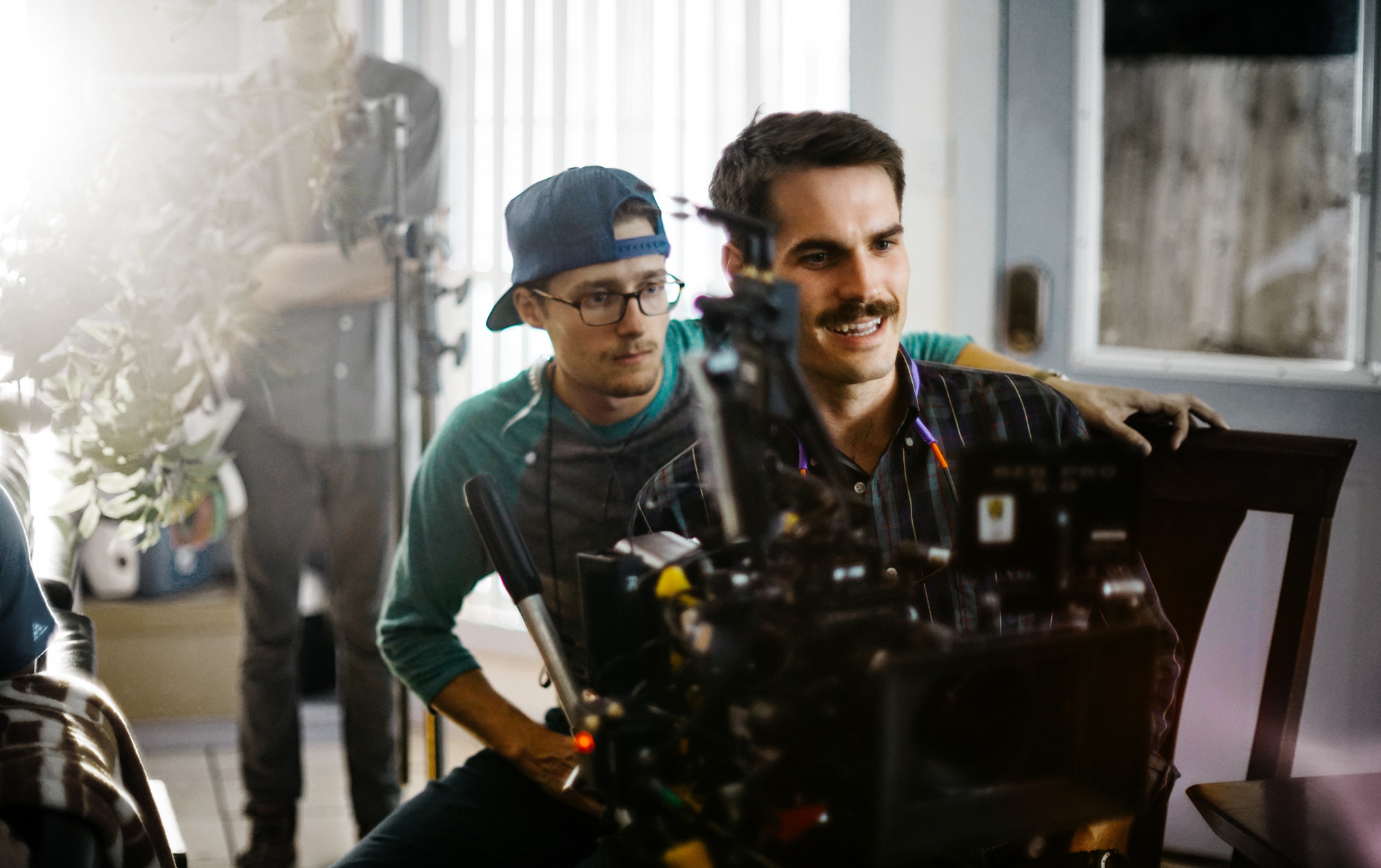
Closing Thoughts
Do you think independent filmmakers have misconceptions about making a feature?
It’s all bullshit — all of this stuff that says in order to make a movie you need a million dollars, this union crew, all of that stuff. It’s all scare tactics to keep people out of the club. You just have to realize there is no club. The only way the system has remained as predatory as it has it because they intimidate people. They make people feel like their movies aren’t going to be good enough if they do it themselves. It’s this weird cult and the termites have spread so far into the mind of independent filmmakers that there’s no encouragement to make independent films. It’s 2018. It’s a war of attention and you can make a better movie than the studios can.
I get really happy about it. You do not need gatekeepers to approve of you before you can reach your audience. If you say you don’t need them and you just go your own way, the audience will support you. They support your independence. This is America. We love independence. We took a big risk and it has been paying off like gangbusters. It also helps that the movie is pretty good.















































































